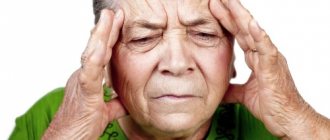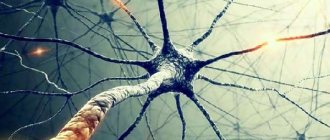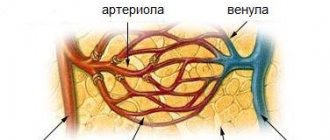Vascular crisis is a pathological condition accompanied by disruption of normal blood circulation in the vascular system of the human body. The disorder can occur in the central or peripheral bloodstream. This disease can occur at any age. It occurs equally often in both women and men.
Recently, cases of vascular crisis occurring at a young age have become more frequent. This concerned doctors, as a result of which they devoted a lot of time to studying and understanding the mechanism of occurrence of this disease.
Why does it crash?
A vascular crisis can occur as a result of the development of any serious illness in the body. Most often it is one of the characteristic symptoms of the following series of diseases:
- Raynaud's disease
- Quincke's edema (angioedema)
- vegetative paroxysms
- congenital heart defect
- arterial hypertension
- angiotrophoneurosis
- hypertension
- cervical osteochondrosis
In addition, the following may be the cause of the development of vascular crisis:
- An imbalance in the body of vasoactive substances (released by vascular endothelial cells), as well as changes occurring in the vascular receptor apparatus.
- Changes in the structure of the walls of blood vessels, which leads to disruption of the elasticity of tissues and their natural functions.
- This often occurs as a result of inflammatory processes in the body, disruption of normal metabolism or atherosclerotic changes.
- Hormonal changes in the body that accompany menopause, gynecological inflammatory diseases and puberty.
- Pathological processes in the endocrine system, central and peripheral nervous systems.
- Congenital and acquired defects of the cardiovascular system, ischemic disease.
- Incorrectly selected therapeutic procedures for the treatment of various diseases. Vascular crisis appears as a consequence of improper treatment.
- Inflammation of the nervous system.
- Congenital pathology of the cervical aorta.
Sometimes it is quite difficult to determine the exact cause of an attack of vascular crisis. This is especially difficult to do in the vegetative-vascular form of this disease, the mechanism of occurrence of which is not fully understood. Among the known reasons for its development are:
- hereditary factor
- hormonal imbalance in the body
- emotional overload and frequently recurring stressful situations
- recent traumatic brain injuries
- pathological changes in the nervous system
- disruption of normal daily routine
Types of parkinsonism
Primary parkinsonism
Parkinson's disease.
Parkinsonism in degenerative diseases.
Juvenile parkinsonism.
Secondary parkinsonism, which occurs against the background of various diseases.
Vascular parkinsonism (with a stroke in the substantia nigra or subcortical ganglia, with dyscirculatory encephalopathy).
Postencephalic parkinsonism.
Post-traumatic parkinsonism.
Posthypoxic parkinsonism
Toxic parkinsonism (poisoning with manganese, ephedrine, carbon monoxide, cyanides, herbicides).
Drug-induced parkinsonism that occurs while taking antipsychotics, lithium, and rauwolfia.
The prevalence of the disease ranges from 100 to 200 cases per 100,000 population and increases sharply in the post-50 age group, reaching from 400 to 1,700 per 100,000 at the age of 70-79 years. The incidence (number of annually registered cases per 100,000 population) is 12-21.
How does a vascular crisis occur?
The term “crisis” refers to sharp and sudden changes in a person’s condition and the subsequent rapid development of the disease. A crisis most often manifests itself in the form of an attack. With this disease, as a rule, there is a violation of blood circulation in tissues and organs.
Spasms in the head
As a rule, an attack appears in the following sequence:
- Spasms of cerebral vessels occur.
- The blood vessels of the brain dilate, which leads to throbbing pain in the head.
- The headache intensifies until it becomes dull and pressing. As a result, perivascular cerebral edema occurs and a vascular crisis occurs.
It should be noted that a crisis occurs quickly. In some cases, the symptoms of this disease can be quite pronounced. Therefore, it is necessary to immediately consult a doctor to receive proper medical care. Hospitalization of the patient is often required.
A vascular crisis manifests itself as an attack that lasts on average about 20 minutes. However, in most patients it manifests itself individually and can last longer.
The first thing to do when symptoms of a vascular crisis appear is to call an ambulance, regardless of where you are. A specialist doctor will conduct a visual examination and, if necessary, prescribe diagnostic tests. After this, he will select the necessary therapeutic treatment that will help you overcome the disease and get rid of its unpleasant symptoms. If necessary, the patient can be admitted to a hospital.
Vestibular syndrome
It’s very nice when your head is spinning with positive emotions. It’s a completely different matter if the ground disappears from under your feet when something is wrong in the body. In this case, you need to be vigilant - sudden dizziness and loss of coordination can be a sign of a stroke, say specialists from the Center for the Prevention and Treatment of Stroke at the Zaporozhye Regional Hospital. Galina Ivanovna from Mikhailovka, Zaporozhye region, knows about this from personal experience - her mother had a stroke. Therefore, when the woman’s blood pressure rose sharply, became very dizzy and started vomiting, she was seriously scared. Everything revolves around me, as if in a kaleidoscope, the weakness is terrible. Any movement ended in continuous vomiting and an attack of dizziness for another patient, Tatyana from Zaporozhye.
One of the most common neurological symptoms is dizziness, which closely follows headaches.
WATCH THE VIDEO ON THE TOPIC: Vestibular vertigo / Hello
Classification of vascular crises
Depending on the nature of the pathological process in the body, there are 2 types of vascular crises:
- Regional or organ crisis, which is characterized by local manifestation. Poor circulation occurs in a specific area of the body or in a specific organ.
- A systemic crisis that occurs as a result of pathological processes in the peripheral bloodstream. It is accompanied by a sharp change in blood pressure and disruption of the normal heart rhythm.
The following types of regional crisis are distinguished:
- Cerebral crisis, which is accompanied by a sudden change in blood pressure. This leads to disruption of normal cerebral circulation.
- Angiotrophoneurosis, which is accompanied by tissue swelling and circulatory disorders.
- Angioedema, which is expressed in localized swelling of the subcutaneous tissue.
- Migraine, which is characterized by changes in vascular tone. In addition, the following types of systemic vascular crisis are distinguished:
- Hypotonic crisis (collapse), which is accompanied by a sharp and severe decrease in blood pressure. There is an excess flow of blood to a certain organ or tissue area.
- Hypertensive crisis, accompanied by a sharp increase in blood pressure. There is a slowdown, restriction or complete cessation of blood flow to an organ or a specific area of tissue.
- Vegetative-vascular crisis, which is a paroxysm of polymorphic disorders of the autonomic system. When this pathology occurs, the autonomic structures and central nervous system are activated.
Please note that vegetative-vascular crisis is the most serious form of this disease. Today there are 4 forms of this type of disease:
- Hyperventilation crisis, which is accompanied by a sharp change in vascular tone and the appearance of an acute lack of air.
- Sympathetic-adrenaline, which occurs as a result of a sharp increase in the activity of the sympathetic department of the central nervous system.
- Autonomic-vestibular crisis - this type of disease often occurs as a result of the development of pathological processes in the central nervous system.
- Vagoinsular - the main cause of its occurrence is a disruption of the normal functioning of the parasympathetic department of the central nervous system.
In the human body, everything is interconnected with each other. Failure in the operation of one or another system entails further complications. Crisis translated from Greek means “sudden change in the course of an illness.” This is a short-term condition of the patient, in which new symptoms of the disease suddenly appear or existing symptoms intensify. Depending on the location of the lesion and accompanying signs, there are several types of the disease.
Consequences of Parkinson's disease
Parkinson's disease is a neurological disease that progresses steadily throughout life.
There are consequences of pathogenetic biochemical processes that lead to the appearance of basic clinical symptoms, such as tremor, hypokinesia, muscle rigidity and postural instability.
Complications from Parkinson's most often refer to emergencies that require immediate medical attention.
Emergency conditions
The consequences of Parkinson's are usually caused by a long course of the disease and a deterioration in the general condition of the patient, especially at a late stage. Complications are divided into two large groups.
Consequences of Parkinson's diseaseCauseTypesDescription
| Complication of the disease | Akinetic crisis | Refers to acute decompensation of Parkinson's disease, observed at a late stage, manifested by the absence of vital functions: impaired swallowing, speech, consciousness, orientation in space, and others. Against the background of regular fatigue, lack of energy, and interest, a consequence such as depression appears. |
| Mental disorders | Psychotic disorders are represented by acute psychosis, panic attack, illusions, a sense of “presence”, hallucinations and delirium. | |
| Severe autonomic dysfunction | The consequences relate to disruption of the autonomic nervous system. According to research, every patient diagnosed with Parkinson's experiences two or more symptoms:
| |
| A fall | It is a consequence of postural instability and a violation of the center of gravity of the body of a person with Parkinson’s. | |
| Prolonged immobilization | The consequences are bedsores, decreased muscle and fat mass, and constipation. | |
| Serotonin syndrome | Caused by a combination of antidepressants and non-selective monoamine oxidase (MAO) inhibitors. Excessive stimulation of serotonin receptors and blocking of dopamine receptors is formed. | |
| Complications of levodotherapy | Motor fluctuations | They are caused by impaired sensitivity to the main drug Levodopa, when there is a lack of drug effect, depletion of a single dose and unpredictable “on-off” effects. |
| Dyskinesia | Dyskinesias refer to the drug of choice and involve an unexpected reduction in the peak or final dose. Simultaneous biphasic dyskinesias may occur. |
The consequences of Parkinson's disease as a result of dopaminergic imbalance develop in two directions: hypofunction of the dopamine system (“switching off”) or hyperfunction (“switching on”). Switching off or “OFF” syndrome includes akinetic crisis or hyperpyrexia, and “ON” syndrome includes mental disorders and severe dyskinesia.
Mental disorders
The consequence of Parkinson's disease can be acute psychosis and panic attack in most cases while taking psychotic drugs (neuroleptics). The mechanism of appearance is due to blocking of dopamine receptors. It develops in the first days of prescribing the drug or by independently increasing the daily dosage.
Neuroleptic malignant syndrome develops at any age; the largest number of cases have been registered in men of the middle and older age groups. Risk factors include:
- infectious diseases;
- exacerbation of chronic diseases of internal organs;
- exhaustion, cachexia;
- massive loss of fluid (dehydration);
- akinetic crisis.
In drug-induced psychosis, hallucinations, illusions, delusions, and hallucinosis occur. Patients may experience fear of being poisoned. Illusions are created of being maimed by loved ones or caring staff. Consequences appear in the form of delusions of persecution and delusions of jealousy.
Complications of Parkinson's disease reach their maximum peak after 2-3 days and can be stopped without additional therapy after 1-2 weeks. The laboratory consequence of psychosis is an increase in creatine kinase and blood leukocyte levels.
Dyskinesia-hyperpyrexia and fluctuation syndrome
A severe consequence of Parkinson's is the development of dyskinesia with hyperthermia and fluctuations. It is characterized by the appearance of rhabdomyolysis - the destruction of muscle tissue, high body temperature, and a decrease in muscle mass.
Important! Dyskinesia syndrome is incredibly similar to akinetic crisis, but the significant difference is the predominance of dyskinesia symptoms rather than rigidity.
Basic pathogenetic therapy for consequences is aimed at a slow gradual reduction in the daily and single dosage of dopaminergic drugs.
To eliminate the consequences, the drug is drunk 50-60 minutes before meals, and medications aimed at bowel movements are prescribed. It is important to reduce protein foods in your diet.
For regression of the consequences of Parkinson's in the form of dyskinesia, fractional use of Levodopa is recommended. The dose is reduced slightly and the frequency of administration is increased.
This portioned administration is a therapeutic strategy that can slow down the OFF period.
The consequences of Parkinson's disease in old age are neutralized by an additional individual combination of anti-Parkinsonian medications. Amantadine has proven itself well.
Causes
Among the factors that provoke malaise, scientists identify the following:
- Arachnoiditis is a serous inflammation of the arachnoid membrane of the brain or spinal cord.
- Hypertension (or persistent increase in blood pressure with readings of more than 140/90 mm Hg).
- Atherosclerosis. This chronic arterial disease is formed due to lipid metabolism disorders. It is accompanied by the deposition of cholesterol in the blood vessels.
- Labyrinthitis. That is, inflammatory damage to the structures of the inner ear, which occurs after infection or is the result of injury.
- Pathology of the central and peripheral nervous system.
- Hemodynamic disorders and other ailments.
Symptoms
Each disease has certain symptoms. What are the main features of vestibular crisis?
- Dizziness that causes sensations of movement of the whole body.
- Noise in ears.
- Decreased hearing.
- Loss of orientation.
- Discoordination.
- Nausea and vomiting.
- Violation of muscle tone.
- Nystagmus (involuntary high-frequency oscillatory eye movements).
At the moment of crisis, the patient is forced to lie with his eyes closed, since any movement causes discomfort.
Diagnostics
A hypotensive attack often requires hospitalization. The following methods are used for diagnosis:
- blood analysis;
- general urine analysis;
- Holter pressure measurement;
- ECG;
- Ultrasound of the kidneys, heart;
- echocardiography.
A general urine test is mandatory. It allows you to detect the following indicators:
- presence of protein;
- hypoisosthenuria.
Holter blood pressure monitoring involves attaching a special sensor. With its help, blood pressure is monitored throughout the day. This method allows you to evaluate the excitability, contractions and conductivity of the heart.
This is an informative diagnosis that allows you to assess the condition of the valve apparatus and blood flow in the heart. The patient may need to consult a cardiologist, neurologist, or ophthalmologist.
Treatment
Unlike, for example, a hypertensive crisis, this type does not pose a threat to the patient’s life.
This in no way means that signs of illness can be ignored.
When the first symptoms appear, you should contact a specialist (therapist, neurologist). The doctor carefully examines the medical history, conducts proper examinations and prescribes a course of treatment, which is aimed at eliminating the underlying disease, neurological and psychopathological syndromes, improving cerebral circulation and metabolic processes in the body.
To reduce the risk of relapse, sedatives are usually prescribed.
Drug treatment includes the use of vestibular suppressors (anticholinergics, antihistamines and benzodiazepines) and antiemetic medications.
Rehabilitation is aimed at accelerating the restoration of the function of the vestibular system and creating conditions for rapid adaptation. One of the important measures is vestibular gymnastics. It consists of a variety of exercises for eye movements, head movements, and gait training.
Remember that with this pathology, a sharp decrease in blood pressure is not permissible.












